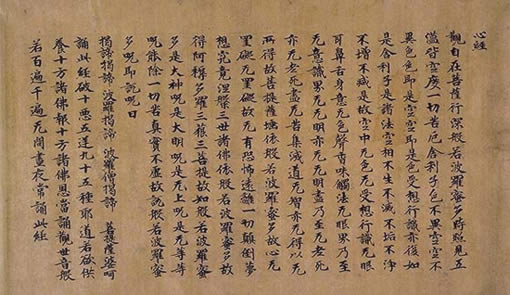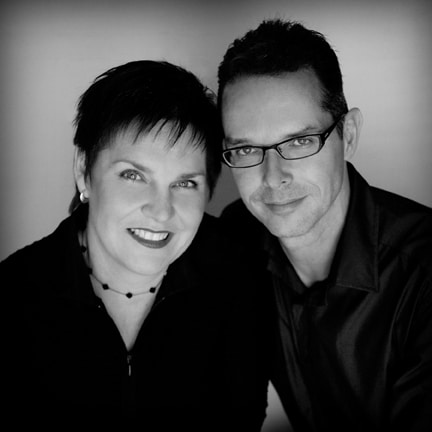
What is the relationship between sutras and the system of Reiki?
Sutras
First, what IS a sutra? A sutra refers to Buddhist canonical scriptures and specifically to the oral teachings of Shakyamuni Buddha.
Some of the most famous sutras practised in Japan are the Heart Sutra (Jap: Hannya shin-gyo), the Diamond Sutra (Jap: Kong-hannya), and the Lotus Sutra (Jap: Hoke-kyō).
It is said that Mikao Usui was a Tendai lay priest. If so, then he would certainly have been familiar with these sutras – if only from his own practice. It is possible to see where elements of the these sutra practices have helped lay the foundation for the teachings of the system of Reiki.
Tendai is a descendant of the Chinese TianTai, or Lotus Sutra School, with the Lotus Sutra being a highly regarded sutra within it. For this reason let us begin by focussing on the relationship between the Lotus Sutra and the system of Reiki.
Reiki Myths
Over the years it has been rumoured that the entire system of Reiki was actually discovered by Mikao Usui in one particular sutra. As this mythical sutra has never been found (and many have searched for it) this rumour appears unfounded. It is also possible to see that it is not true by looking closer at what the system is comprised of.
As a Buddhist lay priest Mikao Usui would certainly have come in contact with sutras but that is not to say that he actually took the entire teachings from one sutra. One example of how to see that the teachings of the system of Reiki were not developed in this way is the inclusion of the Japanese Reiki technique called Dry Bathing (Jap: Kenyoku-ho) which is in fact a Shinto (not Buddhist) practice.
How Sutras Work
In Tendai, the sutras are not just read but also chanted (Jap: Dokyo) and copied (Jap: Shakyo) as a means of furthering one’s spiritual development. The deeper a Tendai practitioner goes within him or herself, the more he or she will get out of chanting and copying the sutras. It is not solely about memorisation but about encountering a direct experience of what a particular sutra is.
The Kanji of Rei from Reiki
The pre-1940s version of the kanji of Rei includes three little bowls or cups in a row. In Buddhist practices these three bowls represent the three aspects of Buddha – Body, Speech and Mind – or the Three Mystic Practices called Sanmitsu in Japanese. Sanmitsu means that through these mystic practices you attain unity with the Buddha. In Tendai, the belief is that everybody is enlightened (a Buddha) already, but it just hasn’t been realized yet; this concept is called hongaku shiso.
Another feature within the kanji of Rei is that of a sorcerer praying for rain.
A Buddhist reading of the kanji of Rei would be;
A sorcerer is praying for rain and the rain falls down into the three cups or, in other words, a sorcerer is praying for rain and the rain is nurturing our Buddha nature so that we realise our inherent Buddha nature.
For non-Buddhist practitioners this can be understood without the Buddhist terms:
The Three Mystic Practices are nothing other then our Body, Speech and Mind. Through purifying these we realise that we are the universe and the universe is us; complete Oneness.
But how does this relate back to the Lotus Sutra?
The Parable of The Medicinal Herbs
A passage in the Lotus Sutra called The Parable of The Medicinal Herbs reads:
It is like the rain falling from the great cloud upon all the plants and trees, thickets and groves, and medicinal herbs. Each, depending upon its species and nature, receives its full share of moistening and is able to sprout and grow.
A couple of paragraphs later it states:
What falls from the cloud is water of a single flavor, but the plants and trees, thickets and groves, each accept the moisture that is appropriate to its portion.
These passages from the Lotus Sutra are about seeing people for who they are; one being is not better than another – we are all the same.
The teachings, i.e. the rain, simply fall from the sky and each being takes from these teachings whatever is needed at that time.
Not only does this philosophy correlate with the meaning of the kanji of Rei – where the shaman allows the the rain to fall down without any judgement at all (it just falls and the shaman or his/her client will take from it whatever is needed), but these Lotus Sutra passages also give us an idea on how to practice hands on healing and perform a reiju or attunement.
In the system of Reiki, specifically in Okuden level II and Shinpiden level II, you learn certain mantras (Jap. Jumon/Kototama) and these represent Oneness (Jap: Ichinyo) and Non-duality (Jap: Funi) respectively. When performing treatments or a reiju/attunement you work from this state of Oneness and Non-duality.
Therefore, you do not make a judgement, you just let it rain energy and the client or student takes from this rain whatever is needed, nothing more, nothing less.
To be able to do this you also need to realise that this energy is just of one single “flavour” – there cannot be more flavours if you work from a space of Non-duality because in that space all is one and the same.
Secret Teachings
Now, let us look at the correlation of another aspect of the system of Reiki with yet and another sutra.
The Dainichi-kyo which is utilised in the Mikkyo (Secret Teachings) teachings of Tendai and the Japanese Reiki technique of Joshin Kokyu ho. During Joshin Kokyu ho you focus on the hara and expand this energy through your body and then out through your skin and into the surroundings. At the end of Joshin Kokyu ho you bring the energy back to the hara. Most commonly, the practitioner visualises breathing in a white light which then flows down to the hara and expands like a balloon through the body and out into the universe. This technique has its roots in the Dainichi-kyo where such techniques are called expansion visualisations (Jap: Kakudai-ho) or permeation visualisations (Jap: Shinto-ho).
In an expansion technique the practitioner focusses on a moon disk which is visualised at different physical locations depending upon the practise and teacher. They could be placed at the heart, forehead, throat, crown and/or the hara.
Could this moon disk be the balloon we often visualise in the Joshin Kokyu ho meditation?
In the permeation technique the practitioner visualises his/her breath leaving the body through all his/her pores on the exhalation and spreading out into the universe. With each in breath the energy returns to the body.
The aim of these techniques from the Dainichi-kyo are to completely merge with the universe; the practitioner and the universe become One and at that stage there is no more separate self visualising the moon disk or in and out breath. Everything becomes One.
This of course might take many years as at first you can only expand the energy with a certain degree of strength – maybe just outside of the body – and then slowly you learn to extend it out and out until there are no more boundaries and you and the universe are One.
This parallels the aim of Joshin Kokyu ho which is why this “simple” technique is practised at each of the three levels of the Japanese system of Reiki and in all traditional Reiki practice groups. It is ongoing as the practitioner works towards encountering a direct experience of the non-dual Shinpiden level III mantra.
Syllable Transformation
One of the other techniques mentioned in the Dainichi-kyo is the syllable-transformation technique (Jap: Tenji-ho) or syllable-transformation yoga (Jap: Tenji-yuga). Here, a Sanskrit syllable, associated with a specific deity, is visualised within the practitioner which over time and with lots of practice helps the practitioner to become One with the deity.
In Okuden level II and Shinpiden level III in the Japanese system of Reiki, Reiki students visualise a Japanese symbol/kanji within the self and one of the Okuden level II symbols is in fact derived from a Sanskrit syllable. The meditations taught to work with these symbols help you to one day have a direct experience of becoming Reiki (spiritual energy) in its fullest sense and Reiki becoming you.
One and the Same
From these examples it is possible to see that the aim of the traditional Japanese system of Reiki is to realise that you are Reiki (spiritual energy) thus achieving a state of Non-duality which is represented by the Shinpiden level III mantra.
This aim of Non-duality is, of course, the same as the sutras practised within Japanese Buddhism.
By digging deeper into the roots of the system of Reiki we can come to some interesting conclusions. One is that the founder of the system of Reiki borrowed from his personal experience of Japanese esoteric practices to create the system. By bringing together a variety of elements from unique sources he ensured that these Japanese esoteric teachings became more accessible to the wider public. And one of the most important elements is that his system was a spiritual practice with the aim of enlightenment with hands on healing as a side effect (rather than the point) of this spiritual practice.
Bronwen and Frans Stiene are the co-founders of the International House of Reiki and co-authors of The Reiki Sourcebook, The Japanese Art of Reiki, Your Reiki Treatment, The A-Z of Reiki Pocketbook and the Reiki Techniques Card Deck. Bronwen and Frans teach in the USA, Europe and Australia. Visit the Courses page to find a course near you.


Comments 1
Thank you Frans and Bronwen for this nicely explained detailed article , about oneness and sutras. So much wisdom in them. Also didn’t knew Joshin Kokyu ho has so much more layers to it. I now try to this with all my patients ( modified a little depending on their condition) before and after their therapy session. The older folks love this , their stress level , heart rate decreases and O2 level increases.